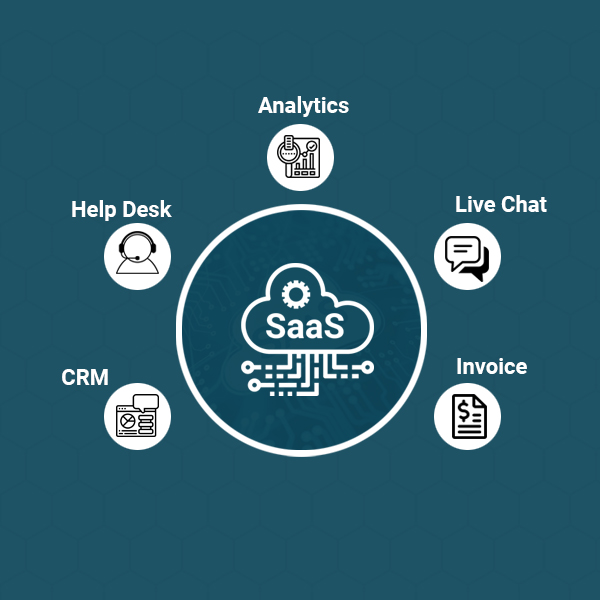How to Develop a SaaS Application in 2023 Development Guide - Connect Infosoft
SaaS Development is the process of building software that is accessible via the internet and hosted on the cloud. These software solutions, known as SaaS applications, can range from simple tools such as email marketing software to more complex systems like customer relationship management (CRM) software.
What is a SaaS Application?
A SaaS (Software-as-a-Service) application is a software application that is delivered over the internet as a service. In a SaaS model, users access the application through a web browser or a thin client, eliminating the need to install and maintain software on individual devices. The application is hosted and managed by a SaaS provider, who is responsible for infrastructure, maintenance, security, and updates.
SaaS Applications Architecture:
The architecture of a SaaS (Software-as-a-Service) application typically involves multiple layers and components working together to deliver the service. Here's an overview of the typical architecture:
- User Interface (UI) Layer: The UI layer is the front-end component that users interact with. It includes web pages, mobile applications or other interfaces that provide a user-friendly way to access and interact with the SaaS application.
- Application Logic Layer: The application logic layer contains the business logic and rules that govern the behavior of the SaaS application. It handles user requests, processes data and performs the core functionality of the application. This layer is responsible for implementing the features and workflows specific to the application domain.
- Data Layer: The data layer manages the storage and retrieval of data required by the SaaS application. It typically involves a database or a data storage system where user data, configurations and application state are stored. The data layer is responsible for ensuring data integrity, security and scalability.
- Integration Layer: The integration layer facilitates communication and data exchange between the SaaS application and other external systems or services. It may involve APIs (Application Programming Interfaces), web services or messaging protocols to enable integration with third-party applications, data sources or partner systems.
- Security Layer: The security layer encompasses various mechanisms to ensure the confidentiality, integrity and availability of the SaaS application and its data. It includes authentication, access control, encryption and other security measures to protect against unauthorized access, data breaches and other threats.
Types of SaaS Apps:
There are numerous types of SaaS (Software-as-a-Service) applications that cater to diverse business needs and industries. Here are some common types:
- Customer Relationship Management (CRM): CRM applications help businesses manage their customer interactions, track sales leads, automate marketing campaigns and provide customer support. Examples include Salesforce, HubSpot and Zoho CRM.
- Enterprise Resource Planning (ERP): ERP applications integrate various business processes such as accounting, inventory management, human resources and supply chain management into a single system. Examples include Oracle NetSuite, SAP Business One and Microsoft Dynamics 365.
- Project Management and Collaboration: These applications facilitate team collaboration, task management, project planning, and document sharing. Popular examples include Asana, Trello, and Basecamp.
- Human Resources Management (HRM): HRM applications streamline HR operations, including employee onboarding, time and attendance tracking, payroll management, and performance evaluation. Examples include BambooHR, Workday, and ADP.
- Financial Management: These applications handle financial tasks such as invoicing, expense tracking, budgeting, and financial reporting. Examples include QuickBooks Online, Xero, and FreshBooks.
- Communication and Collaboration: These applications focus on communication and collaboration within teams or across organizations. They often include features like messaging, video conferencing, file sharing, and project collaboration. Examples include Slack, Microsoft Teams, and Google Workspace.
- E-commerce and Online Shopping: These applications enable businesses to sell products and services online, manage inventory, process payments and track orders. Examples include Shopify, WooCommerce, and BigCommerce.
Benefits of SaaS Application Development:
The benefits of developing a SaaS application are many.
First, it provides a more cost-effective and scalable alternative to traditional website development.
Second, it allows for a faster time to market. With the ability to access applications online, users can use the software almost instantly, which results in more sales.
SaaS Application Development Challenges:
The biggest challenge is the complexity of building applications that are scalable and reliable. SaaS applications must also be secure and easy to use. To overcome these challenges, a developer needs to have experience in SaaS development, particularly when it comes to coding for scalability, security and efficiency.
Tags: How to Develop a SaaS Application in 2023 Development Guide, SaaS Development, SaaS Application Development, SaaS Application Development Company, SaaS applications, Benefits SaaS Applications


